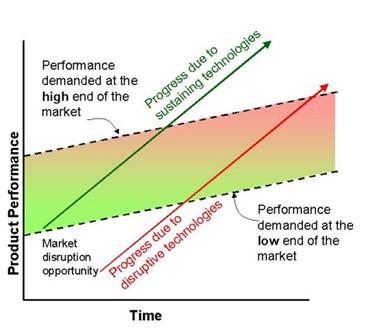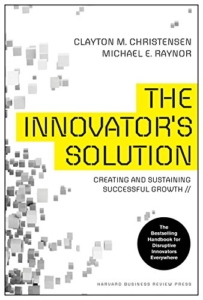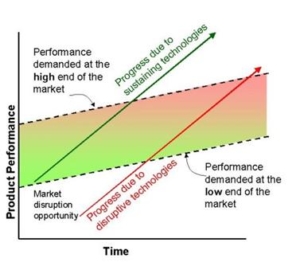Top 7 Qualities of a Highly Successful Open-Source Software Company

Disruptive businesses
Six days ago, I wrote about the key factor influencing a disruptive market strategy, “New Market.” Today’s post summarizes six additional characteristics of a truly disruptive open-source business. Most of them derive from one of the best books I can think of in the area of disruptive business models, “The Innovator’s Solution: Creating and Sustaining Successful Growth” by Clayton M. Christensen.
Here are all “Seven Qualities” as of March 18, 2007.
1. A new market
I believe that a new business model alone doesn’t make it, be it open source, or SaaS, or whatever. The key idea is that in order to be truly disruptive, an offering has to address a large underserved market segment, and create a NEW market in the first place.
In commercial open source, the initial target is never the existing users of expensive, proprietary software. What the heck can they do with your scrappy product? The best target market is a highly growing underserved market with a lot of demand and little to no supply. Similar to what MySQL offered to all Internet small businesses who can’t afford MS SQL or Oracle database to power an e-commerce shop or a content management system of a micro business with little to no revenues. Then, move up the stack and target the ones who have the budget, but are still not willing to pay $5K–20K for a piece of software if there is a cheaper or better yet FREE alternative.
2. Low price
It takes 5x to 10x the price advantage between what your proprietary competitors charge for a solution and what a commercial/supported package of your software costs in order to create enough disruptive “leverage” to cross the chasm and enter the mainstream market.
3. Good-enough product
A product/solution should be good enough to solve 50% to 80% of the most common customer needs. At the beginning, your competition will not consider such an offering as a threat at all, as it doesn’t have all of the “things” and “features” their BMW-driving sales force is communicating to prospects all day long. Their customer and your customer are two different animals.
4. Easy to implement
The product should be simple enough that it can to remain easy to implement and extract value from. Take Mule, a highly successful open-source ESB as an example. Mule can be installed in several minutes compared to hours to install and configure proprietary products from EII/ESB vendors, such as TIBCO. At Apatar, we strive to do the same and make sure Apatar ETL can be installed in two minutes or less.
5. Community of loyal users
There should be enough supporters willing to contribute their time to requesting new features (compliment Product Marketing), testing your software and reporting bugs (compliment QA), and developing new product functionality (compliment R&D).
6. Standard technology
A disruptive open-source product/solution should utilize widely used technologies, which have already become or could become a “commodity”-type component in a technology stack, such as LAMP or Java.
7. New distribution channels
The traditional distribution models are not good for a truly disruptive product. No BMW-driving sales folks to “push” your product into the market (unless you are really short on time and have VC backing to support some direct sales). The Internet is replacing most roles in the marketing, PR, and sales functions of an emerging open-source startup.
If you have ideas about any additional components that make an “essential” package of a disruptive open-source software startup, I’d love to hear about them.








